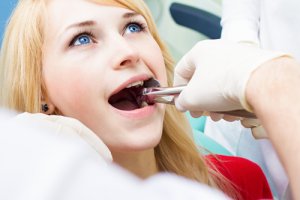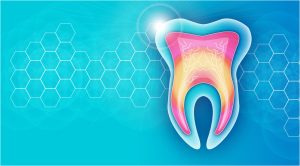Let’s talk about dental stem cells. A few years ago ‘stem cells’ was a buzzword, a hot-button topic that would send politically opposed radicals at each other’s throats.
But today, stem cell research is a rapidly progressing scientific field, with promising medical advances that are greatly improving lives globally.
Dental stem cells are currently still in the research and clinical trial phase but so far they have shown great potential to treat a wide range of ailments across the entire body — the brain, the musculoskeletal system, the GI tract, and of course, the teeth.
In this article, we’ll catch you up on the latest in the world of dental stem cells and answer these questions:
- What are dental pulp stem cells?
- How are they collected?
- What are their current and future applications?
We also interview Dr. Ophir Klein, a Stemodontics team member, so you can hear it straight from a professional in the field.
If you’re interested in learning more about other specialized fields of dentistry, you can have a look at them in our dental services guide.
Stem cells: the basics
Stem cells are cells which generate all of the other cells in the body that have specialized functions. Stem cells divide to form these other cells which are called daughter cells.
Daughter cells can become more stem cells, or they can become specialized cells. If they become specialized cells, this is called differentiation. They may become blood cells, heart muscle cells, bone cells, or brain cells.
Stem cells are special because they are the only cells that have the ability to form other stem cells, or to create new specialized cells.
Why are stem cells so important?
Stem cells are critical in helping researchers:
- Understand disease: By observing how stem cells evolve into organ and tissue cells, researchers can see how diseases develop
- Advance regenerative medicine: Researchers hope to expand on the practice of using stem cell therapy to repair tissue damaged by disease or trauma
- Test new drugs: Cells with specialized functions can be used to test specific drugs
Stem cells have greatly contributed to regenerative medicine — that of replacing or regenerating damaged human cells for curative purposes.
That is a great question and one that we debate a lot in the dental research community. On the one hand, there has been enormous progress in organ bioengineering over the past few years, so there is reason for optimism about growing an entire tooth.
However, teeth take a long time to mature, so there is an alternative school of thought that says the following: we are very good at making dental materials (to fix the hard part on the outside of the tooth), so rather than growing an entire tooth, let’s focus on regrowing the living part – the cells on the inside – and then put an artificial cap on the outside.
I think the jury is still out as to which approach will work better in the long run.
Dental stem cells
The regeneration of dental pulp began to catch researchers’ eyes thanks to the work of stomatologist G.L. Feldman in 1932. He was able to achieve pulp regeneration using fillings made from dentin. Then, in 2000, this work was improved on by Stan Gronthos, and the cells used to do so were referred to as dental pulp stem cells, now known as DPSCs.
Dental pulp stem cells
DPSCs are mesenchymal stem cells (MSCs), meaning they are multipotent cells, found in bone marrow, which are important for creating skeletal tissues, like bone, cartilage, and fat.
This is useful because bone marrow has a limited amount of MSCs, and these decrease with age and disease, and they also have been shown to decrease when someone is overweight. This decrease in MSCs essentially leads to weaker bones.
DPSCs can differentiate (or become) dentin cells in vitro (or outside of their natural environment — in a lab for example) and inside of their natural environment they can become “dentin-pulp-like complex” according to this Stan Gronthos study.
DPSCs are considered to be good candidates for the regeneration of dental tissue for four primary reasons:
- They are easy to access during surgery and easy to keep alive after
- They generate more dentin tissue faster than stem cells that don’t come from the teeth
- They can be cryopreserved and combined in various tissue regeneration support structures
- They have anti-inflammatory properties which are helpful in allotransplantation (transplanting tissue from the same species)
Dental pulp stem cell banking from wisdom teeth
Wisdom tooth extraction is an ideal time for retrieving DPSCs, because these cells are at their peak viability when patients are between the ages of 12 to 24 which is typically when wisdom teeth are removed.
How does dental stem cell banking work?
If your oral surgeon is going to bank wisdom tooth stem cells, the good news is, the wisdom tooth extraction process is no different from the patient’s point of view.
The only variance from the regular procedure is that once the wisdom teeth are extracted, they are put into a special solution that keeps the stem cells viable when normally, they are discarded into a medical waste container.
The next step is to remove the stem cells from the tooth and grow them in vitro, in a Petri dish, and freeze them. They can be preserved like this for as long as necessary, and used in clinical trials and studies.
DPSC from wisdom teeth and the future
We asked Dr. Ophir Klein, MD, PhD, a Stemodontics board member, about the specifics of the process of banking stem cells from wisdom teeth:
What are the benefits of collecting and storing stem cells from wisdom teeth?
These cells have the potential to become many different types of cells in the adult body, and by collecting them from young patients whose stem cells are healthy and have not suffered age-related damage, we can provide an “insurance policy” for the life of the patient.
In addition, there is growing evidence that beyond their regenerative potential, stem cells can be used to treat various diseases by modulating inflammation and through other mechanisms.


Are the stem cells you collect now already being used to benefit your patients? If not, when do you see this happening?
We are at the beginning of an exciting journey in the therapeutic use of adult stem cells. At this point, there are many clinical trials going on using DPSCs, and we anticipate that these will be deployed clinically in the coming years.
What are some practical applications of dental pulp stem cells?
There are hundreds of studies documenting potential practical applications of DPSCs. These cut across multiple organs, including the brain, gastrointestinal tract, musculoskeletal system, and other parts of the body.
Can stem cells be used to repair teeth?
Yes – there are exciting preliminary reports of the use of DPSCs in the repair of injured teeth, including revitalizing the pulp, which is particularly important because death of the pulp requires painful procedures like root canals. If we can routinely revitalize the pulp using stem cells, that would be an enormous benefit to patients.
Conclusion


Dental stem cell research is advancing at a rapid rate and showing great potential to aid in the treatment of ailments not just of the mouth, but across the entire body.
Dental pulp stem cells can be banked during wisdom tooth extraction, without any impact on the patient, frozen and stored, and used in research and clinical trials until they are approved for actual use in patients.
From revitalizing pulp to regenerating the brain, or regrowing new teeth, the possibilities for the applications of dental pulp stem cells are practically endless, so be sure to follow along with the rapid advancements in this exciting field in the coming years.
If you’re interested in learning more about tooth regeneration, you can read our separate article about stem cell dental implants.
FAQs
Can stem cells regrow teeth?
Stem cells can’t regrow teeth just quite yet, and the process to do so takes time, so scientists are considering an alternative — regrowing the inside of the tooth, and reconstructing the outside.
What are dental stem cells used for?
Dental stem cells are being researched for their great potential to regenerate new tissue including dentin, gum tissue, tooth pulp, bone tissue, and even whole teeth.
Are dental stem cells available?
Dental stem cells are not currently available for use in medical procedures as they don’t have FDA approval and more research is needed. But they have great potential and research is advancing.
NIH: Postnatal Human Dental Pulp Stem Cells (DPSCs) in vitro and in vivo. Consulted 20th October 2022.
Mayo.edu: Mesenchymal Stem Cell Biology. Consulted 20th October 2022.




